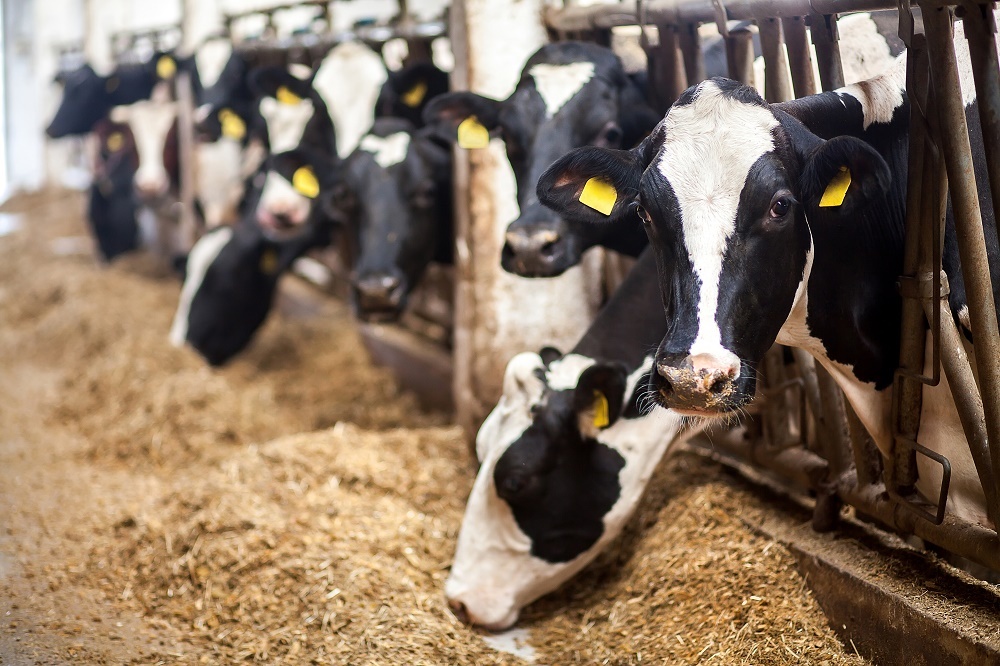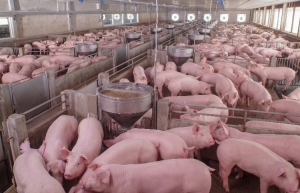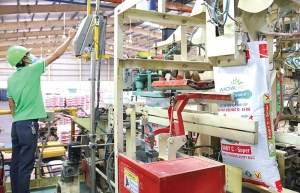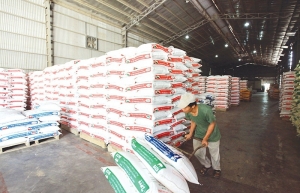Feed producers prepare for self-sufficiency in production
Several weeks ago, a series of animal feed companies announced they would increase the selling price of their products. Viet Nhat Animal Feed JSC applied its new prices on November 16, while Asia International Nutrition JSC also announced increases for several of its products. The reason was that the price of fuel, raw materials, and feed production costs have been constantly increasing, along with a rising USD exchange rate that shows no sign of stopping.
Tong Xuan Chinh, deputy director of the Department of Livestock Production under the Ministry of Agriculture and Rural Development (MARD), said, “In 2023, the price of animal feed cannot cool down because Vietnam depends on imported materials and supply chains from key sources. The current conflict between the world’s two major wheat and corn producers, and high costs in other major corn producing countries in South America and Europe due to weather and energy crises, are adding up to this.”
Chinh explained that the price of raw materials for animal feed production has increased continuously since autumn 2020, in which the price of corn and soybean meal increased the highest. “Between 2015 and 2020, the price of domestic animal feed ingredients was relatively stable, even decreasing at some point. The biggest difficulty is the limited domestic production capacity of animal feed ingredients, which relies heavily on imported materials.”
According to Chinh’s department, Vietnam needs a considerable amount of fine feed ingredients, while the country can only supply about 13 million tonnes annually, accounting for about 35 per cent of the total demand. The rest comes from imported sources. Currently, the total demand for refined feed such as maize, soybean meal, bran, and fish meal of the entire livestock industry of Vietnam is about 33 million tonnes per year, mainly used for pig and poultry production. Vietnam imports about 20-22 million tonnes of animal feed ingredients each year, including ingredients for aquatic products.
 |
| Feed producers prepare for self-sufficiency in production, photo shutterstock |
In 2023, Vietnam’s animal feed industry may continue to feel two risks in particular, according to domestic manufacturers. Firstly, about 80 per cent of input materials for animal feed production are imported, so an increase in the USD exchange rate will lead to higher import prices. Secondly, African swine fever may continue to affect the supply of pork, while current vaccines have not shown many positive results.
Many meat producers expect difficulties to ease in 2023 as pig prices are expected to increase by 5 per cent over the same period, thanks to increased demand for food. This month, as meat producers are actively restocking for Lunar New Year, the Commodity Exchange of Vietnam found that the price of input materials for the animal feed industry was at a high level and thus attractive to domestic manufacturing enterprises.
According to the exchange, due to the nature of direct links with world prices, the prices of animal feed ingredients in the Vietnamese market are likely to remain at a stable price range and are unlikely to fall sharply, a fact that could be used by livestock enterprises and factories to buy and import goods and prepare for the anticipated recovery of raw material prices.
Many domestic analysts forecast that feed costs will gradually decrease in 2023, offset by a 10-15 per cent increase in meat consumption demand from the fourth quarter of 2022 as the Lunar New Year approaches.
Nevertheless, a few Vietnamese companies have considered self-sufficiency in raw materials for animal feed production. De Heus Vietnam asked the MARD to develop a key animal feed production area to proactively source domestic raw materials and lower the price of animal feed.
“We are ready to coordinate, build a preliminary processing plant, and store raw materials for animal feed,” said Nguyen Quang Hieu, deputy general director of De Heus Vietnam. The firm is planning to develop a material growing area in the Central Highlands for animal feed in the next 2-3 years. Currently, domestic raw materials only account for 10-15 per cent of De Heus’ structure of input materials for animal feed production.
“The biggest problem is to accumulate enough land to form a large sample field,” Hieu said. “Only then will it be possible to develop mechanisation and the area of genetically modified corn, which renders us able to compete with imported materials. Currently, maize yield in Vietnam is only 4.8 tonnes per hectare, meaning it’s difficult to compete.”
| According to the Ministry of Agriculture and Rural Development, total export turnover of agricultural products in the first 11 months of 2022 of Vietnam reached $49 billion, surpassing the record figure of 2021 of $48.6 billion. It is expected that for 2022, the agricultural industry will achieve an export turnover of over $53 billion. The US continued to be the largest import market of agricultural, forestry, and fishery products from Vietnam in the first 11 months of 2022, reaching $12.3 billion, accounting for a quarter of the market share. Next is China with about $9.3 billion, accounting for 18.9 per cent market share. |
 | Raw material import necessity squeezes feed groups While Vietnam is traditionally a strong producer and exporter of rice and other produce, animal feed producers largely depend on overseas imports of raw materials, leaving them vulnerable to price fluctuations and global incidents like climate change and the ongoing pandemic. |
 | Feed producers seek alternative sources to save on costs Many animal feed producers in Vietnam are snapping up domestic rice to replace imported equivalents, in the context of the rocketing increase in material prices and supply shortages. |
 | Raw material price hikes discouraging feed producers High prices of feed ingredients have been having an effect on feed producers while customers do not want to bear additional costs. |
What the stars mean:
★ Poor ★ ★ Promising ★★★ Good ★★★★ Very good ★★★★★ Exceptional
Related Contents
Latest News
More News
- First members of Danang International Finance Centre revealed (December 22, 2025 | 17:39)
- Human-centred governance seen as key to AI development (December 19, 2025 | 18:19)
- Top 10 notable events of Vietnam’s industry and trade sector in 2025 (December 19, 2025 | 14:00)
- Tungsten surges to 12-year high as world enters a new 'black gold' race (December 18, 2025 | 17:27)
- Vietnam’s coffee exports set new record despite price pressures (December 18, 2025 | 17:13)
- Garment and textile sector seeks new growth after volatile year (December 18, 2025 | 17:01)
- VinSpeed and Siemens strengthen cooperation for high-speed rail development (December 18, 2025 | 16:53)
- High-tech adoption for TH true MILK (December 18, 2025 | 13:39)
- Takeda supports health resilience amid climate change challenges (December 18, 2025 | 12:39)
- Mondelez Kinh Do - a chapter of purpose-led leadership in Vietnam (December 18, 2025 | 09:44)

 Tag:
Tag:





















 Mobile Version
Mobile Version